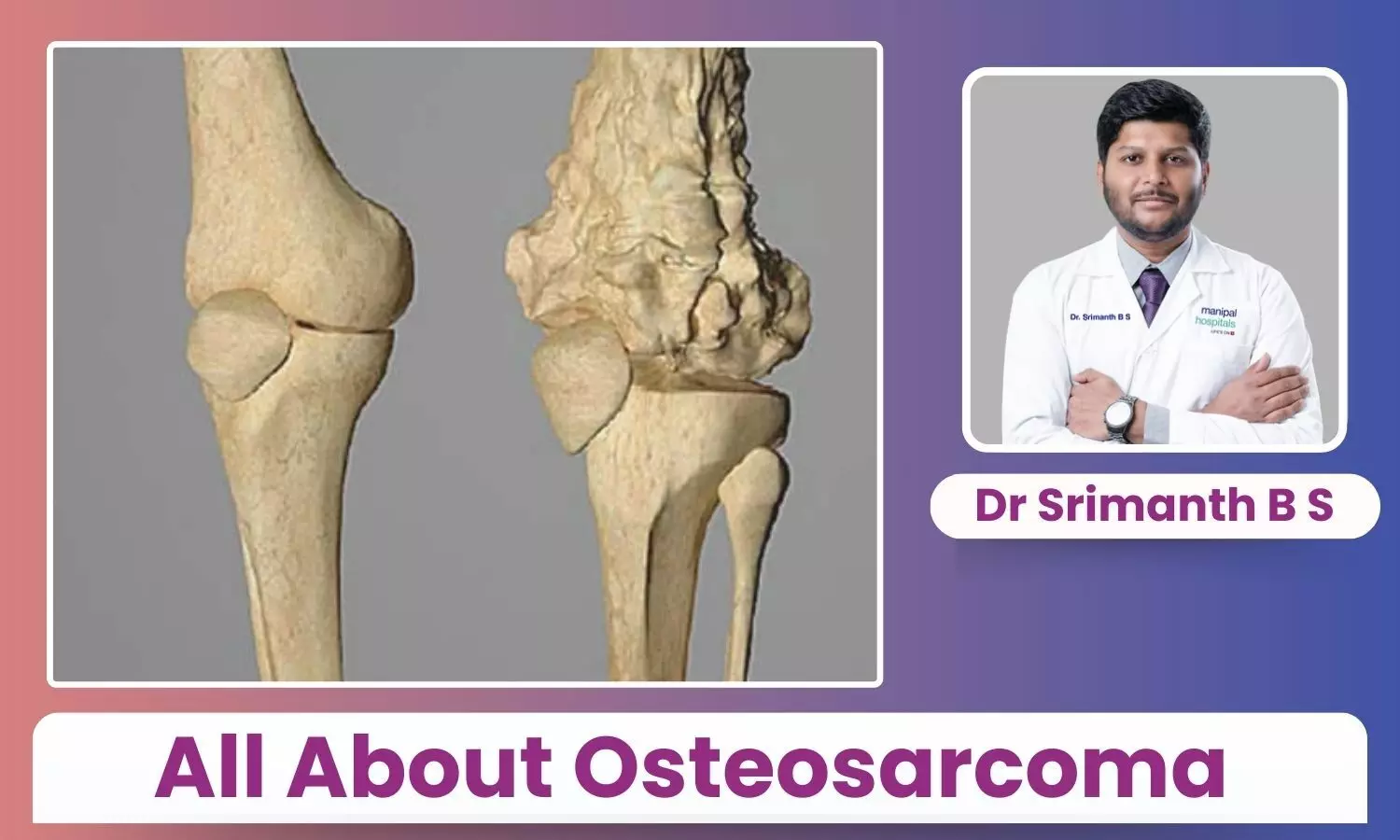Osteosarcoma: Key Causes and Treatment Approaches - Dr Srimanth B S

An Osteosarcoma is an aggressive cancerous growth arising from the bones and joints of the skeletal system. Osteosarcoma is rare, but the most common bone cancer in children in the pediatric age group.
Risk factors and causes
The cause of osteosarcoma is not well understood. Several factors have been proposed, but not conclusive. Damage to DNA due to unknown factors has been postulated. Exposure to radiation at a young age with high dosage for any other ailment. Younger age and taller children may indicate to rapid growth theory.
Certain bone disorders like Paget’s, fibrous dysplasia, genetic syndromes such as retinoblastoma, Li-Fraumeni syndrome, Rothmund-Thomson syndrome, Werner syndrome, Bloom syndrome and Diamond-Blackfan anaemia have been considered.
Overall, these are rare causes, and one must not panic.
Common symptoms of osteosarcoma
Osteosarcoma, a rare but aggressive type of bone cancer, often affects teenagers and young adults. Early detection is crucial for better outcomes, so being aware of its symptoms is important.
Pain associated with swelling is the most important symptom and sign associated with a sarcoma.
• Bone Pain-Which is worsening at night or during rest. Children unable to sleep at night due to bone pain or swelling are “Red flag” signals.
• Swelling (Lump) - Which is more than “Size of Lemon” or 5 cm and growing rapidly
• Fracture- Due to a trivial fall or injury- could be an aggressive cancer or late late-stage sign
• Weakness, fatigue, inability to move the joint or walk, neurological compression symptoms- these are seen in advanced stages
Method of diagnosis
Osteosarcomas are diagnosed by following tests, in a stepwise manner:
• X-ray (Plain Radiograph)
• Relevant blood tests
• MRI and or CT scan
• Biopsy (Minimally Invasive Tissue Sampling)
• Staging by Whole body Scan (Bone scan or PET CT)
Treatment
All bone cancers, including osteosarcomas, are treated with the guidance of a multidisciplinary team of cancer specialists who formulate a tailored plan.
The following modalities are implemented, either alone or in combination:
• Chemotherapy (Helps shrink tumour and make surgery possible)- administered in medium and high-grade osteosarcomas
• Limb Salvage Surgery
• Radiotherapy (Used only to recycle osteosarcoma bone and not provided to the body)
Surgery as definitive treatment
As suggested, surgery plays a vital role in managing osteosarcomas and is a key modality in treating high-grade sarcomas. It enables safe removal of the bone tumour with appropriate reconstruction to restore mobility and is performed across all grades of osteosarcoma. Amputation is now rarely required, reserved only for cases with rapid disease progression or late presentation.
Osteosarcoma is more life-threatening than other Yes, since sarcomas have a propensity to spread to other organs in the body aggressively and pose a threat to life if left untreated.
Osteosarcoma can be cured
If osteosarcoma is detected at an early stage, your chances of achieving a complete cure are significantly higher. Early diagnosis allows doctors to initiate prompt and targeted treatment, improving outcomes considerably. Scientific data indicate that, with timely intervention and appropriate therapy, the cure rate can exceed 60–70%, giving patients a much better prognosis and quality of life.
How can you reduce your risk of osteosarcoma?
As detailed in the starting points, any patient with a risk of osteosarcoma will be followed up and assessed periodically. There are no specific, identifiable or screenable points for the general population. Early identification and diagnosis is a priority.
Recent advances in sarcoma treatment
• We can incorporate technology in aiding precise osteosarcoma removal during surgery (use of patient-specific instruments or robotics). Manufacture custom 3D Printed/Custom Made Prosthesis which precisely fits the defect after osteosarcoma removal.
• We are also able to recycle osteosarcoma-affected bone and reimplant it in a defect, ensuring biological healing, especially in the pediatric age group to accommodate and enable uninterrupted growth.
Disclaimer: The views expressed in this article are of the author and not of Health Dialogues. The Editorial/Content team of Health Dialogues has not contributed to the writing/editing/packaging of this article.


